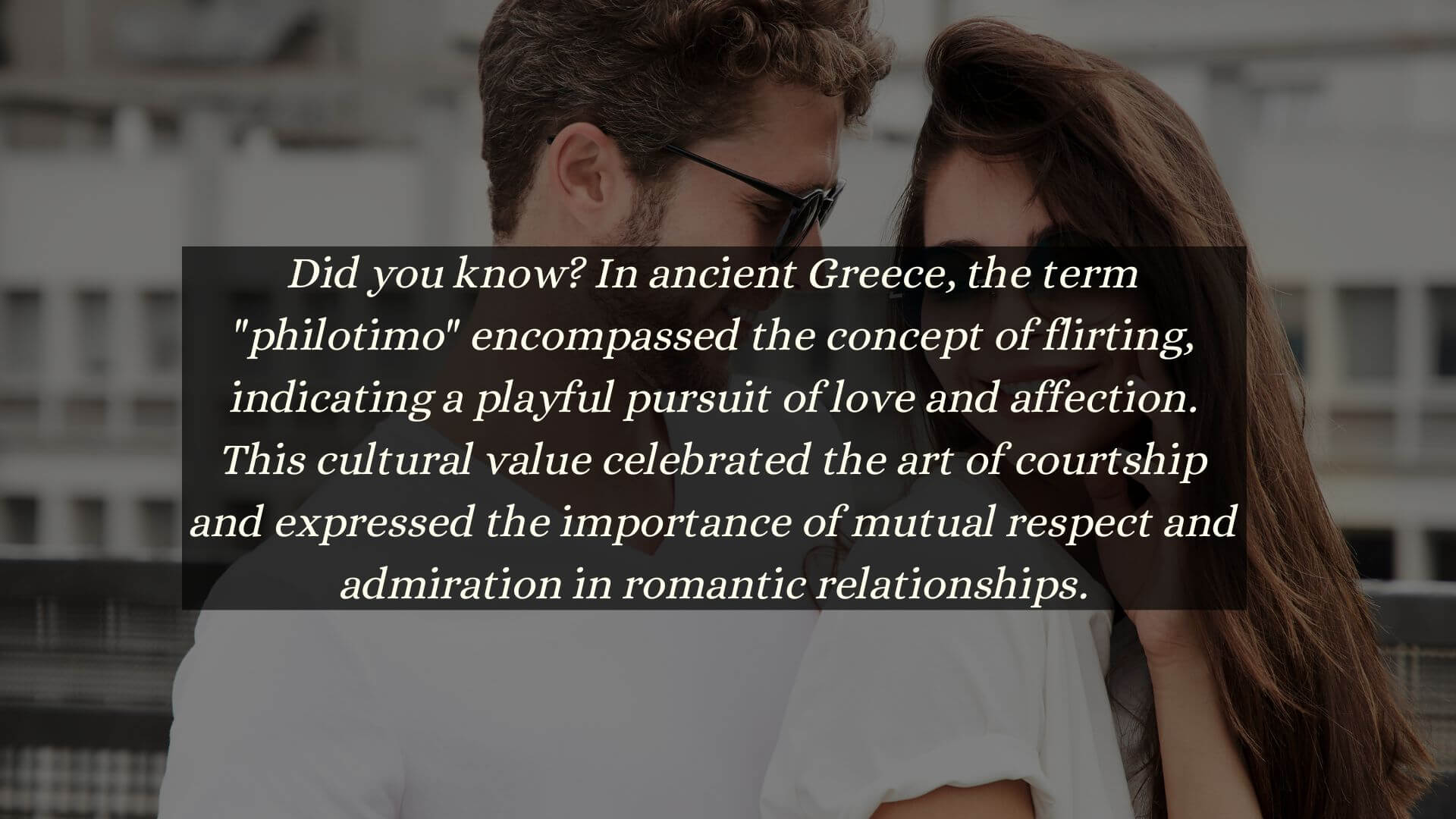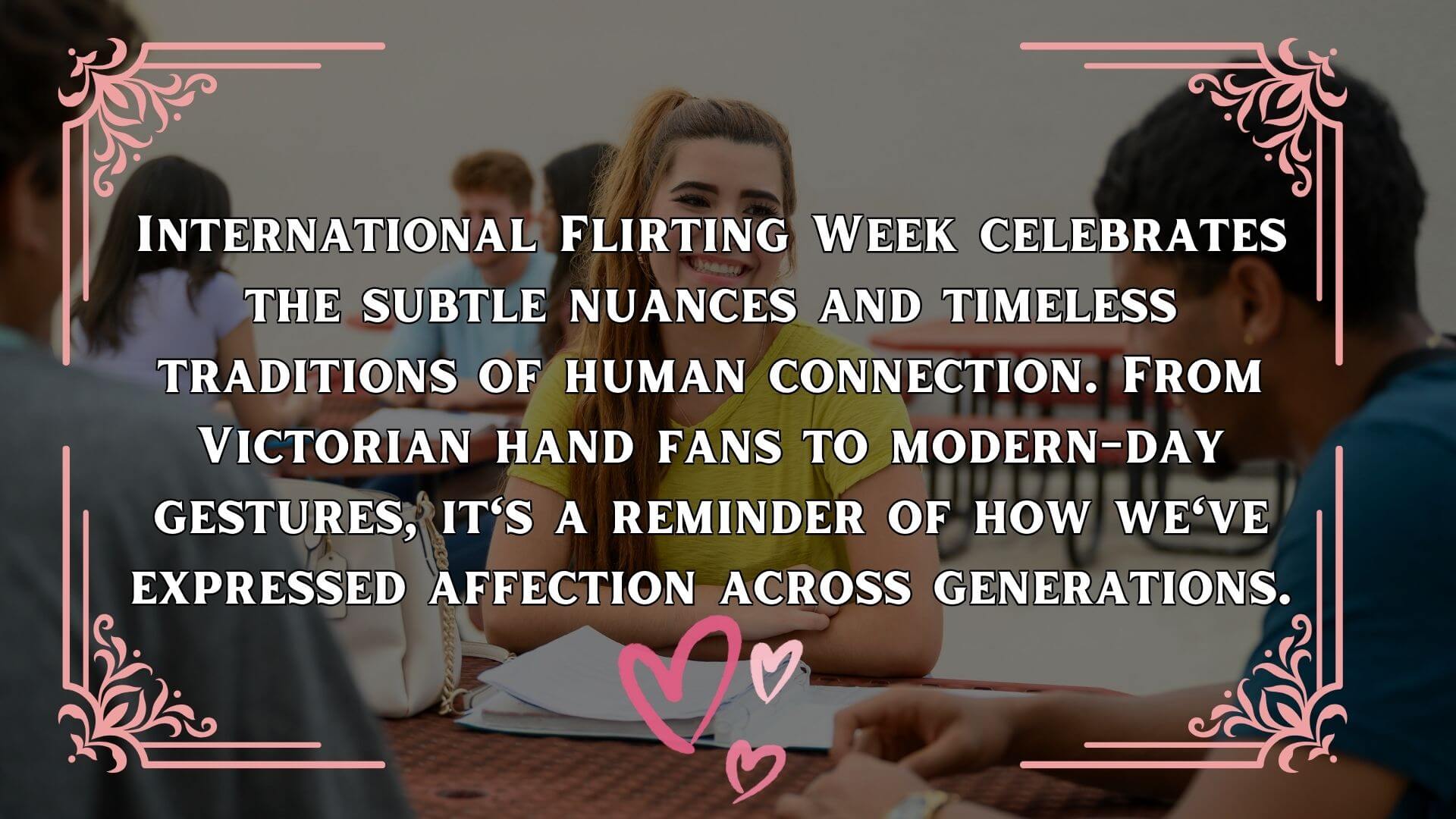International Flirting Week, occurring in the second full week of February from the 11th to the 17th serves as a playful celebration of the art of flirtation. The concept of flirting itself has a rich history, with the word ‘flirting’ deriving from the French word ‘fleurette,’ meaning ‘try to seduce by the dropping of flower petals.’ This charming term reflects the delicate and nuanced nature of initiating romantic connections. In 1797, Charles Francis Badini introduced the Original Fanology or Ladies’ Conversation Fan in London. During the Victorian era, hand fans became a prominent tool for flirtation, acting as a silent language at social gatherings. Specific gestures conveyed messages; for instance, placing the fan near the heart meant ‘I love you,’ while opening it wide signaled ‘wait for me.’ This unique form of communication was widely understood, providing an intriguing historical glimpse into non-verbal expressions of affection. The 1881 book “Our Deportment: Or the Manners, Conduct and Dress of the Most Refined” by John H. Young outlines guidelines for Victorian courtship, emphasizing manners and etiquette during the initial stages of flirtation. The advice included a caution against gentlemen showing exclusive attention to a particular lady if they did not intend to pursue matrimony. Overt signs of affection were also discouraged, reflecting the restrained nature of courtship in that era.
In 1797, Charles Francis Badini introduced the Original Fanology or Ladies’ Conversation Fan in London. During the Victorian era, hand fans became a prominent tool for flirtation, acting as a silent language at social gatherings. Specific gestures conveyed messages; for instance, placing the fan near the heart meant ‘I love you,’ while opening it wide signaled ‘wait for me.’ This unique form of communication was widely understood, providing an intriguing historical glimpse into non-verbal expressions of affection. The 1881 book “Our Deportment: Or the Manners, Conduct and Dress of the Most Refined” by John H. Young outlines guidelines for Victorian courtship, emphasizing manners and etiquette during the initial stages of flirtation. The advice included a caution against gentlemen showing exclusive attention to a particular lady if they did not intend to pursue matrimony. Overt signs of affection were also discouraged, reflecting the restrained nature of courtship in that era. Moving to the 20th century, during World War II, anthropologist Margaret Mead observed the dynamics of flirting between American soldiers and British women. Cultural differences led to miscommunication in expectations, highlighting how flirting can be influenced by broader societal contexts. These historical perspectives underscore the dynamic nature of flirting, evolving with societal norms and cultural shifts.
Moving to the 20th century, during World War II, anthropologist Margaret Mead observed the dynamics of flirting between American soldiers and British women. Cultural differences led to miscommunication in expectations, highlighting how flirting can be influenced by broader societal contexts. These historical perspectives underscore the dynamic nature of flirting, evolving with societal norms and cultural shifts.
As International Flirting Week approaches, it offers a lighthearted opportunity for individuals to embrace the art of flirtation. Whether actively participating or reflecting on the historical evolution of flirting, it serves as a reminder of the diverse ways humans have expressed romantic interest over the centuries. Do you have any personal experiences or thoughts on the subject?
Do you have any personal experiences or thoughts on the subject?
Written By:

Rtr. Balakrishnan Suhashini
(Junior Blog Team Member 2023-24)


